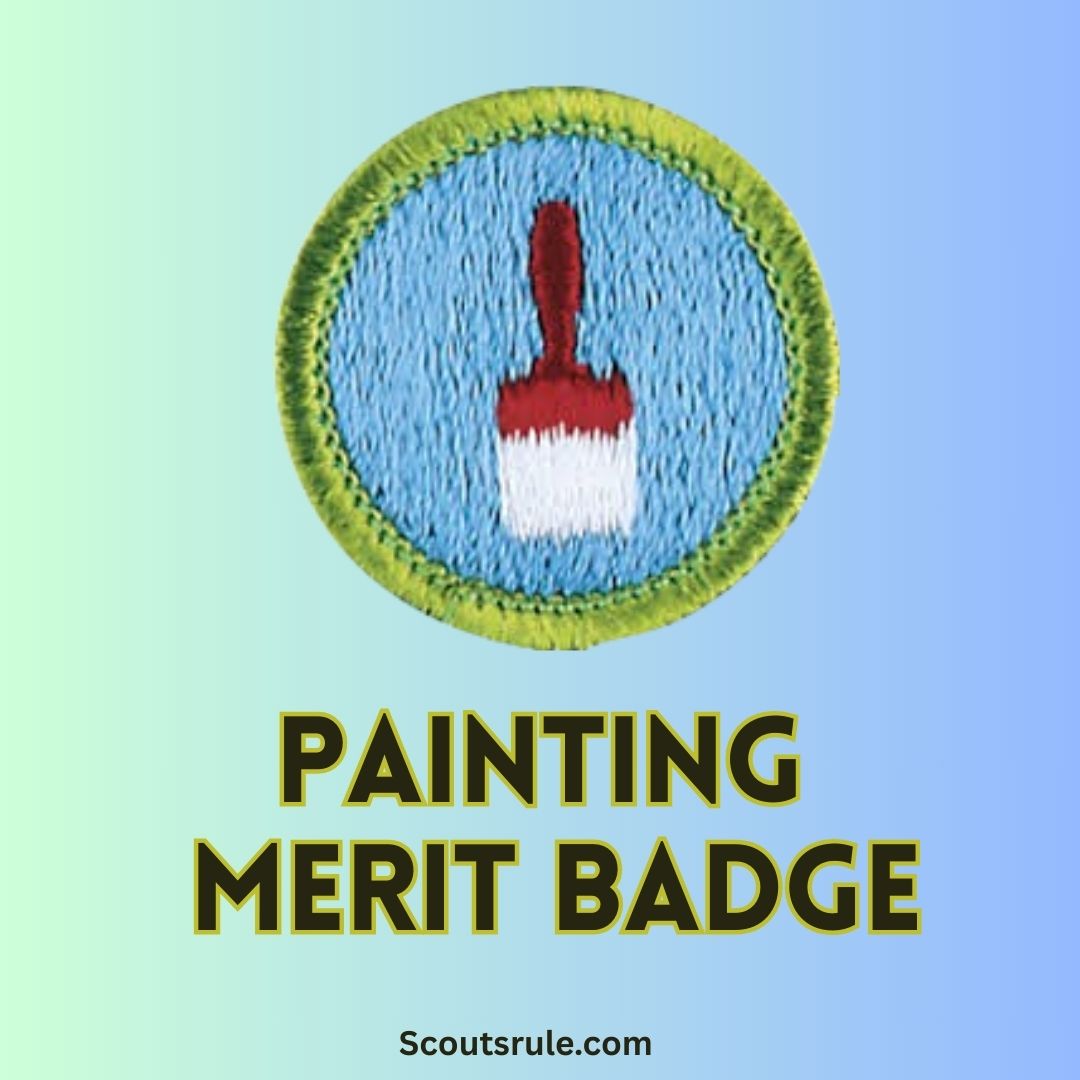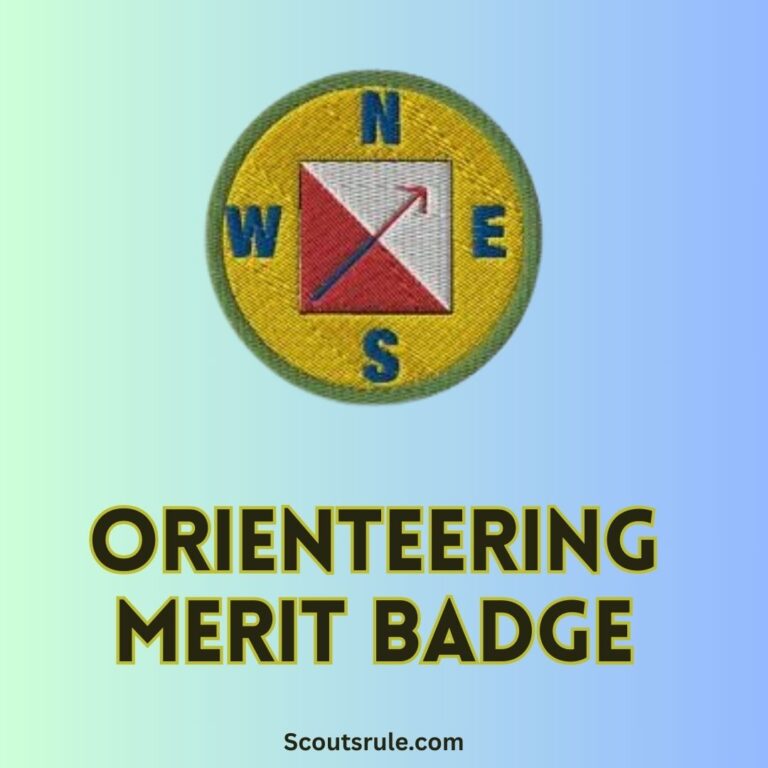
Painting is more than merely applying colors to a surface—it is an art form and a science that can transform spaces, evoke emotions, and protect materials. The Painting Merit Badge challenges Scouts to explore the multifaceted world of painting by learning proper techniques, understanding the properties of various coatings, and producing tangible work. By delving into this badge, you will learn essential safety procedures, examine the impact of different painting materials, and experiment with projects that require creativity, precision, and an understanding of color theory. Whether you envision a future in art, design, or carpentry, painting is a skill that enhances your ability to improve your surroundings and express your creative vision.
Post Contents
- 2. Overview of the Painting Merit Badge Requirements
- 3. Requirement 1: Safety Procedures
- 4. Requirement 2: Enhancing Surfaces with Coatings
- 5. Requirement 3: Preparing and Painting Two Different Surfaces
- 6. Requirement 4: Using Harmonizing Colors
- 7. Requirement 5: Proper Use, Cleaning, Maintenance, and Storage of Painting Equipment
- 8. Requirement 6: Ladder Safety, Personal Hygiene, and Use of Personal Protective Equipment
- 9. Requirement 7: Environmental and Health Considerations
- 10. Requirement 8: Exploring Careers in the Painting Craft
- 11. Practical Tips, Resources, and Further Exploration
- Conclusion: A Mastery That Extends Beyond a Badge
2. Overview of the Painting Merit Badge Requirements
The badge is structured to guide you through a series of tasks that cover both theoretical knowledge and practical application. The general requirements include:
- Requirement 1: Explain the proper safety procedures to follow when preparing surfaces and applying coatings.
- Requirement 2:
- (a) Explain three ways that coatings can improve a surface.
- (b) Explain the suitable applications for enamel paint, flat paint, wood stain, and varnish, and discuss the importance of sheen.
- (c) Explain why each type of coating is best for its respective use.
- Requirement 3: Prepare and paint two different surfaces using patching materials, caulking, and the appropriate primers and topcoats (projects may include painting a wall, door, piece of furniture, concrete wall or floor, porch rail, or fence—preapproval required by your counselor).
- Requirement 4: Prepare and paint an item using a harmonizing color scheme selected using a color wheel.
- Requirement 5: Demonstrate the correct use, cleaning, maintenance, and storage of painting equipment.
- Requirement 6: Explain the importance of ladder safety, personal hygiene, and the use of personal protective equipment (PPE) when painting.
- Requirement 7: Explain the environmental and health issues associated with removing paint, applying paint, and disposing of old paint.
- Requirement 8: Research and discuss career opportunities in the painting craft, including training and required experience, and explain why you might be interested in such a career.
These requirements form a holistic approach to learning, ensuring that as you work through your projects, you understand the practical, technical, and ethical aspects of painting.
3. Requirement 1: Safety Procedures
Before you even lift a paintbrush, you must develop a keen awareness of safety procedures. This section is crucial not only for protecting yourself, but also for ensuring that the finished project is executed correctly and responsibly.
Key Safety Procedures:
- Surface Preparation: Always ensure that the surface you plan to paint is free of dust, grease, and old or flaking paint. Use proper cleaning agents and sanding techniques to prepare surfaces. This minimizes potential hazards such as uneven adhesion and the release of harmful particles.
- Personal Protective Equipment (PPE): Wear safety goggles to protect your eyes from splashes, gloves to prevent skin absorption of chemicals, and a suitable respiratory mask when sanding or painting in a poorly ventilated space. Protective clothing such as coveralls or aprons should also be worn to avoid stains and chemical exposure.
- Ventilation: Work in well-ventilated areas, especially when using paints that emit volatile organic compounds (VOCs). If indoors, open windows and use fans to circulate fresh air.
- Ladder and Tool Safety: When painting elevated surfaces, ensure that ladders are stable and placed on a flat surface. Always have someone nearby or use a ladder stabilizer for additional safety. Inspect all tools before use and store them properly after the project.
Understanding these safety aspects is critical; it not only protects your well-being but also ensures the overall quality of your work. Discuss these procedures with your counselor, provide examples of how you would prepare a work area, and describe the correct order of operations to maintain a safe and organized workspace.
4. Requirement 2: Enhancing Surfaces with Coatings
This multi-part requirement is designed to deepen your understanding of how various paints and finishes can improve a surface and meet specific objectives.
4.1 Improvement Methods of Coatings
Coatings are used in painting not just for aesthetics, but for protection and function. Here are three ways that coatings can improve a surface:
- Protection from the Elements: Coatings prevent wear and tear from weather conditions—such as moisture, UV exposure, and temperature fluctuations—which can cause decay or deterioration. For instance, a sealant can protect wood surfaces from rot, thereby extending their lifespan.
- Enhancing Visual Appeal: The right coating can transform a simple surface into something visually striking. It can add texture, depth, and color. Techniques like layering multiple finishes might give a surface an aged look, a glossy shine, or a matte appearance, each suited for different decorative purposes.
- Improving Functionality: Coatings can provide additional properties such as water resistance, anti-corrosion protection, and even antimicrobial properties. For example, a varnish can not only enhance the natural beauty of wood but also shield it from scratches and spills.
4.2 Application of Different Finishes and the Role of Sheen
For part (b) of the requirement, you must explain where to apply specific types of coatings and why the sheen level matters. Consider the following:
- Enamel Paint: Enamel is highly durable and provides a hard, glossy finish. It’s best used on surfaces that require strong protection against wear—such as metal fixtures, doors, and outdoor furniture. The glossy sheen of enamel enhances the appearance of these surfaces and makes them easier to clean.
- Flat Paint: With no shine, flat or matte paint is excellent for interior walls and ceilings. Its lack of reflectivity can help hide imperfections on the surface. It is ideal for areas where a subtle, elegant look is desired.
- Wood Stain: Wood stain is formulated to penetrate deeply into wood fibers to enhance the natural grain while providing some level of protection. It is best used on wooden furniture, decks, or trim where the natural appearance of wood is to be preserved and enhanced, rather than covered entirely with a solid color.
- Varnish: This transparent coating provides protection without obscuring the underlying surface. Often used on wood, varnish seals the surface, providing a long-lasting, protective finish with variable sheen levels, from matte to high gloss. Its flexibility makes it a favorite for both indoor and outdoor wood surfaces.
Each coating is suited to specific uses not only based on durability and appearance but also on the level of sheen, which influences reflectivity, maintenance, and overall visual impact. Explain that the sheen (gloss, semi-gloss, satin, or matte) affects both the durability of the finish (with glossier finishes often more resistant to moisture) and the aesthetic, where a matte finish provides a softer look compared to the dramatic shine of enamel.
4.3 Why Each Coating Is Best for Its Use
Detailing why each coating is ideal involves discussing material durability, longevity, appearance, and maintenance requirements. For example:
- Enamel Paint is preferred for surfaces that must endure heavy use and exposure to the elements. Its hard finish is easier to wipe clean, making it optimal in high-traffic areas.
- Flat Paint hides surface imperfections, making it ideal for large interior walls where uniformity and understated elegance are valued.
- Wood Stain allows the natural patterns and textures of wood to show through while providing a layer of protection against moisture and decay.
- Varnish strikes a balance by protecting the surface while allowing the beauty of the underlying material to remain visible, which is crucial in fine furniture or hardwood finishes.
Document your explanations clearly, perhaps with diagrams or sample comparisons, so that you fully articulate how the properties of each coating align with its best use.
5. Requirement 3: Preparing and Painting Two Different Surfaces
The third requirement is highly hands-on: you will prepare and paint two different surfaces. This project builds technical skills as well as an understanding of adhesives, patching, caulking, priming, and topcoats.
Project Planning
- Selected Surfaces: Choose two distinct surfaces that are practical and display a variety of textural challenges. Examples might include painting an old wooden door and an exterior wall with patchy deterioration or painting a piece of furniture alongside a concrete floor.
- Pre-Project Approval: Always have your planned projects preapproved by your counselor. This step ensures that the surfaces are appropriate and that you have considered safety and environmental factors.
Surface Preparation
- Cleaning and Patching: Begin by cleaning your chosen surfaces thoroughly to remove dirt, grease, or flaking old paint. Use appropriate cleaning agents. Repair any cracks or holes using patching material or caulking, smoothing the area for an even finish.
- Priming: Apply a primer suited to the surface material. Primers help ensure that the topcoat adheres properly and that the final color appears vibrant and consistent.
Application of Topcoats
- Technique: Apply your chosen topcoat carefully. Use brushes, rollers, or spray equipment as appropriate, following techniques to avoid drips and achieve an even application.
- Securing a Uniform Finish: Allow each coat to dry as per the manufacturer’s instructions, lightly sanding between layers if needed, particularly on uneven surfaces.
By documenting every step—from surface preparation to the final coating—you build an instructive portfolio that shows your technical prowess and creativity.
6. Requirement 4: Using Harmonizing Colors
For this requirement, you will prepare and paint an item using a harmonizing color scheme derived from the color wheel. This exercise tests your understanding of color theory and its practical application.
Steps to Create a Harmonizing Color Scheme
- Study the Color Wheel: Review the basics of the color wheel, which includes primary, secondary, and tertiary colors. Research complementary, analogous, triadic, and monochromatic schemes.
- Select Your Palette: Based on the guidelines provided in the Painting Merit Badge pamphlet, choose a set of colors that harmonize. Explain why you chose these particular colors—for example, a complementary scheme may provide a vibrant contrast, whereas an analogous scheme creates a more unified, serene effect.
- Design Your Project: Choose an object or an interior surface to paint that will serve as a canvas for your harmonizing colors. Carefully plan the layout, ensuring that color transitions are smooth and the end result is visually appealing.
- Execution and Documentation: As with Requirement 3, document each step of your process, noting any challenges you encountered in achieving the right balance of color. Feedback from peers or mentors can assist you in refining your approach.
This project reinforces the importance of design principles and the emotional impact that a well-executed color scheme can have.
7. Requirement 5: Proper Use, Cleaning, Maintenance, and Storage of Painting Equipment
The longevity and quality of your painting projects depend heavily on proper equipment handling. This requirement asks you to demonstrate and explain:
Key Equipment Handling Practices
- Usage: Demonstrate the correct way to apply paint using various tools (brushes, rollers, sprayers). Emphasize proper techniques that ensure an even coat and efficient use of materials.
- Cleaning: Explain how to clean your brushes, rollers, and other tools immediately after use. For water-based paints, warm, soapy water is usually sufficient; for oil-based paints, proper solvents must be used.
- Maintenance: Daily and periodic tool maintenance extends the life of your equipment. This includes:
- Checking for and removing dried paint residues.
- Storing brushes in a way that keeps them in good condition.
- Maintaining sprayers or rollers by cleaning their mechanisms and checking for any clogs.
- Storage: Store all equipment in a cool, dry place away from direct sunlight and dust. Explain how improper storage can lead to damage or reduced performance over time.
Providing a live demonstration or a detailed step-by-step process can be very effective here. Document and photograph each step, and be ready to discuss the risks of neglecting proper care.
8. Requirement 6: Ladder Safety, Personal Hygiene, and Use of Personal Protective Equipment
Safety goes beyond surface preparation—it extends to your personal well-being during a painting project.
Ladder Safety
- Stable Setup: Always place ladders on flat, stable surfaces and use ladder stabilizers when painting elevated surfaces.
- Maintenance: Inspect ladders for defects or signs of wear before use.
- Proper Use: Follow the prescribed angles and avoid overreaching, always keeping your body centered between the ladder rails.
Personal Hygiene and PPE
- Hygiene: Wash your hands and face frequently when working with chemicals, and avoid touching your face during a project. Keep a change of clothes for after-project cleanup.
- PPE: Always wear gloves, masks (if needed for fumes or dust), safety goggles, and coveralls. Discuss why each piece of PPE is necessary and what risks it mitigates.
- Reporting: Document your use of safety protocols and explain to your counselor how these practices protect you against potential hazards.
Your understanding and demonstration of these measures show a commitment to safety that is necessary for any hands-on project.
9. Requirement 7: Environmental and Health Considerations
Painting involves chemicals that, if not handled properly, can have adverse environmental and health effects. In this section, you must explain:
- Removal of Old Paint: Methods for safely removing old layers of paint, especially if they contain lead or other hazardous substances. Explain the importance of adhering to environmental regulations and proper disposal methods.
- Application of New Paint: Address the use of VOC-free or low-VOC paints that minimize environmental impact and health risks.
- Disposal of Waste: Describe how to properly dispose of used solvents, rags, and paint cans. Emphasize recycling where possible and safe disposal practices in accordance with local laws.
Discussing these topics shows your awareness of sustainable practices and your responsibility as both an artist and a citizen.
10. Requirement 8: Exploring Careers in the Painting Craft
Painting is a diverse field that spans artistic creation, decoration, restoration, and technical finishing. This requirement asks you to:
- Research Potential Careers: Explore careers such as professional painter (both artistic and decorative), restoration specialist, mural artist, or industrial painter. Look into the education and training required for each.
- Interview a Professional: If possible, speak with someone in the field. Ask about their day-to-day work, the challenges they face, and what advice they have for a young person starting out in painting.
- Prepare a Report or Presentation: Summarize your findings, including the necessary equipment training, certifications (if applicable), artistic skills, and business knowledge required. Explain why this profession interests you and how you might see yourself involved in the field in the future.
Understanding career prospects will help you connect your practical skills with long-term opportunities and inspire you to pursue your passions further.
11. Practical Tips, Resources, and Further Exploration
Practical Tips
- Practice and Experiment: Before starting the official projects, try quick experiments with scrap materials. Develop your technique with different brushes and rollers, and practice mixing colors.
- Keep a Detailed Journal: Document every stage of your projects—from sketches and color selection based on the color wheel to the final application of topcoats. This journal can serve as both a learning tool and part of your merit badge portfolio.
- Seek Feedback: Show your work in progress to art teachers, peers, or experienced painters. Constructive criticism is an invaluable part of refining your skills.
- Stay Organized: Maintain an organized work area and a checklist of safety procedures and painting steps. This habit will ensure consistency and quality in your finished projects.
Resources
- Online Platforms: Websites such as Scoutles.com and ScouterMom.com provide additional tips, sample worksheets, and project ideas for painting.
- Books and Guides: Explore popular painting and color theory books. Local libraries may have resources that explain both traditional and modern staining techniques.
- Workshops and Local Classes: Sometimes, local community centers, art supply stores, or vocational schools offer classes on painting techniques and equipment maintenance.
Utilize these resources to build a robust understanding of the craft and to stay current with best practices.
Conclusion: A Mastery That Extends Beyond a Badge
Earning the Painting Merit Badge is a journey that marries technical expertise with creative expression. By learning proper safety protocols, exploring various painting techniques, and applying design principles—from the fundamental science of coatings to the subtleties of color harmony—you are equipping yourself with valuable skills that extend far beyond the world of painting. Each requirement, whether it involves a hands-on project or an in-depth research assignment, contributes to your overall knowledge and provides practical insights that you can incorporate into academic, creative, or career pursuits.
Moreover, your exploration of environmental impacts and health considerations underscores the responsibility artists and tradespeople hold when working with chemicals and materials that affect both people and nature. Engaging with topics such as proper waste disposal, the benefits of low-VOC paints, and sustainable practices ensures that you not only achieve beautiful results but also contribute to a healthier environment.

Hi, Robin here, A former lead Scout and here I share my inspiring stories about USA Scouts, leadership, adventure, how to guides and more.






